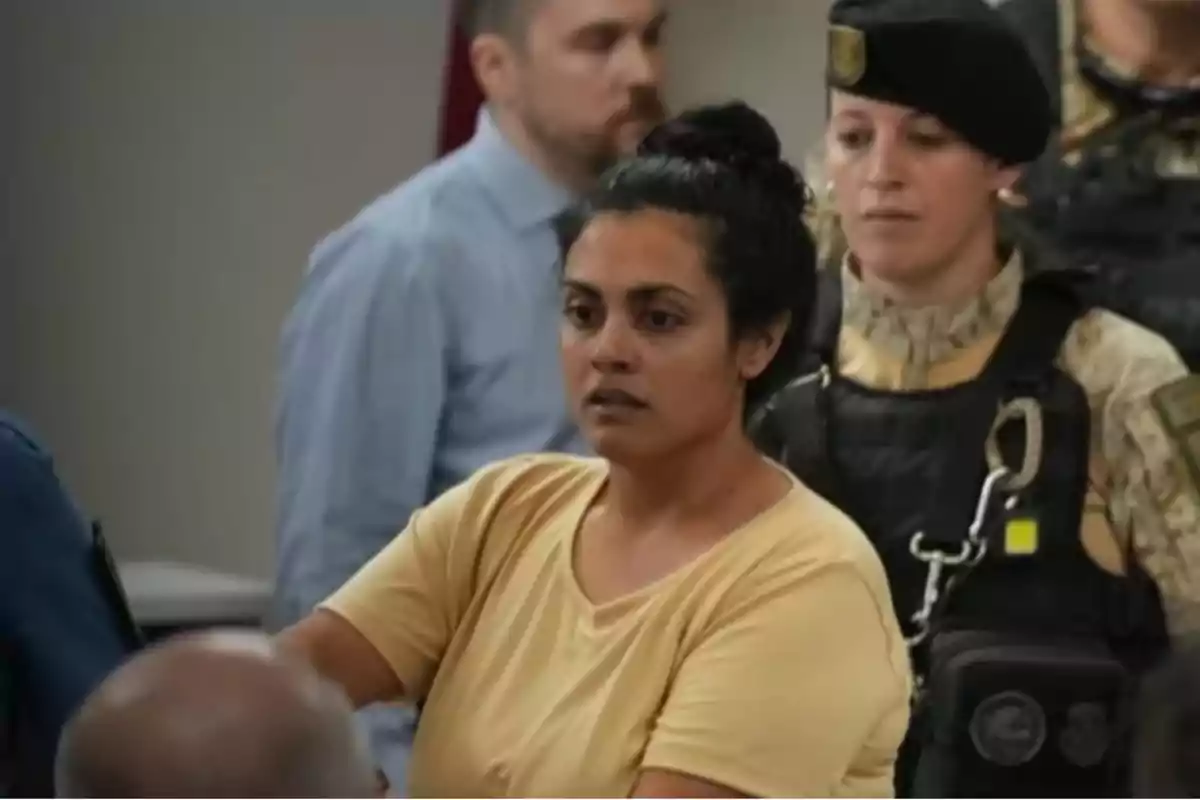
Brenda Agüero was sentenced to life imprisonment for killing babies at a hospital in Córdoba.
The convicted nurse cared for the babies as soon as they were born at Córdoba Neonatal Hospital
After six months of oral and public trial, nurse Brenda Agüero was found guilty of committing the serial murder of five babies and of attempting to kill another eight newborns, whom she attended immediately after birth at the Neonatal Hospital of Córdoba.
This was decided on Wednesday by a popular jury composed of eight citizens and two magistrates. Meanwhile, several officials who were implicated in the case were acquitted.
Agüero received a life sentence. According to the Penal Code, that was the only possible sanction for a case of these characteristics, which has no precedent in Argentine justice.
The verdict was by majority and was read after 8:00 p.m. by the secretary of the 7th Nominating Chamber in Criminal and Correctional Matters, the court that conducted the judicial process. Previously, Judge Patricia Soria gave an introduction in which she broke down while reading words of gratitude that brought the trial to a close.

The jury began deliberating early in the morning, and the analysis extended for more than ten hours due to the complexity of the case file. The grounds for the verdict will be announced once the winter judicial recess is over.
The case
The attacks occurred between March 18 and June 7, 2022. However, the string of tragedies was reported to the justice system only a month after the last death. The report was filed by engineer Francisco Luperi, husband of an on-call doctor, who decided to go to court after hearing from his partner about the serious events that were taking place.
On the initial day of that timeline, two attacks occurred: V.U.M., who survived, and Francisco Calderón Cáceres, who died 11 hours after being born.
Although no autopsy was performed on Francisco, the clinical analyses carried out while attempts were made to save his life revealed a high concentration of potassium in his body. A bloodstain was also detected on his clothing. At that time, those signs did not seem significant to his family, who were immersed in grief. However, they gained importance over time, as unexplained deaths and collapses began to repeat.
Of the 13 cases that went to trial —of which only the last two deaths were subjected to autopsy—, several showed puncture marks in areas of the body unusual for a medical procedure. In addition, levels of potassium and/or insulin in the blood were identified as incompatible with life and could only be justified by external administration. In other words, the human body could not have caused such an excess on its own.
Prosecutors argued that Brenda Agüero may have acted driven by professional motivations: she was allegedly seeking to stand out before her superiors, being the first to notice the babies' symptoms, raise the alarm, and thus earn a promotion from the Obstetrics area to the Neonatology sector.
The area in which Brenda Agüero worked is not a minor detail: she was assigned tasks exclusively related to the care of mothers and was not supposed to have direct contact with the newborns. However, investigations confirmed that she was the only person present at all the critical episodes.

It was also proven that she maintained an "exclusive proximity" with both the mothers and their babies. On multiple occasions, she was left alone with both, and even found herself alone with the newborns while the women were going through the postpartum recovery period. This situation was unusual, since the rest of the staff usually worked as a team.
According to what prosecutor Raúl Garzón determined during the investigation, Agüero had access to potassium doses and insulin from the so-called "crash carts," which did not have strict inventory controls. She then administered these substances to the babies in a disorderly manner and in random areas of the body, an action that the prosecution interpreted as a criminal act carried out secretly and quickly.
On June 6, four newborns suffered collapses within a matter of hours. The doctors who testified during the trial unanimously agreed: they had never witnessed more than one sudden death or serious collapse in a baby on the same day. Much less four almost simultaneous events.
That day marked a turning point at the hospital: the crisis escalated and numerous doctors and nurses, including Brenda Agüero, were granted leave. The deaths of Melody Luz Molina and Angeline Rojas were reported individually, separate from the rest of the cases. However, their respective autopsies proved key to clarifying the overall picture.
More posts: